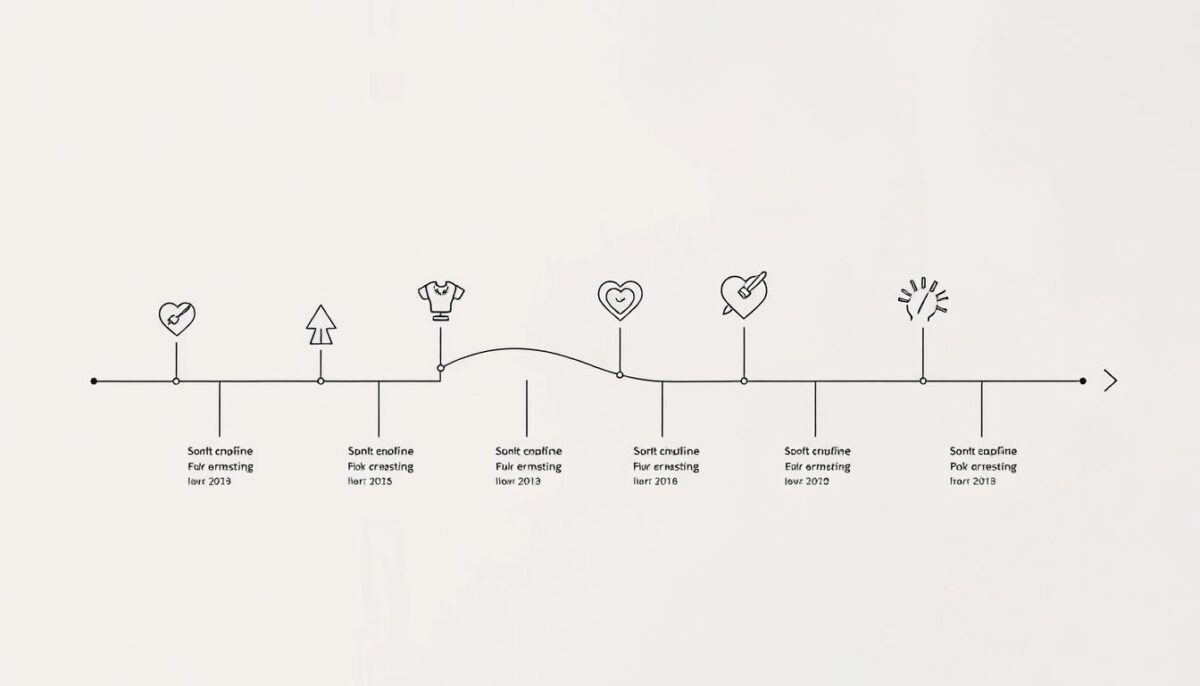Understanding the Divorce Plan Chapter 21 process is key when going through a divorce. This guide explains Chapter 21, which helps with financial and legal issues during a split. It’s especially important in North Dakota, a “no-fault” divorce state.
This guide will help you understand the basics of a divorce plan chapter 21. It shows how this legal process affects people ending their marriages. We’ll cover important topics like filing requirements, financial disclosures, and who can use Chapter 21. This will give you a clear view of the Chapter 21 process.
Understanding Divorce Plan Chapter 21
When dealing with family law, knowing Chapter 21 of the Bankruptcy Code is key. It helps those going through divorce manage their debts. This way, they can find financial relief and deal with divorce obligations.
What is Chapter 21 of the Bankruptcy Code?
Chapter 21 of the Bankruptcy Code offers a way to handle financial duties. It defines important terms like “corporation,” “distribution,” and “net assets.” These terms are crucial in many areas.
It also makes it clear that shareholders don’t own property just because they have certificates. This ensures everyone knows who owns what. The code also talks about how companies are run and how decisions are made.
This legal framework is important for those looking into a divorce plan chapter 21. It helps find a fair solution during a difficult time.
Importance of Chapter 21 in Divorce Cases
In divorce cases, Chapter 21 is key for managing debts from settlements. It lets individuals reorganize their finances and meet their obligations. This is especially helpful for those with big financial problems.
By using Chapter 21, I can deal with my debts better. This ensures a fair outcome in my divorce. Knowing about these laws helps reduce the emotional and financial stress of family law.
Steps to Initiate a Divorce Plan Under Chapter 21
Starting a divorce plan under Chapter 21 requires several key steps. These steps help make the transition smoother during a challenging time. It’s crucial to focus on filing the right documents and making sure your financial information is correct.
Filing the Required Documents
Filing the right documents is the first step in starting a divorce plan. You’ll need to submit a divorce petition and other state-specific forms. These documents lay the legal foundation for your divorce. It’s important to make sure all the information is right. Any mistakes could cause delays or problems later on.
Here’s a list of common documents you’ll need to file:
- Divorce petition
- Summons
- Financial disclosures
- Child custody agreements (if applicable)
- Property division agreements
Preparing Your Financial Disclosure
Preparing your financial disclosure is another crucial step. This document details your assets, debts, income, and expenses. It’s key in figuring out how to split property and debts fairly. It helps avoid misunderstandings and ensures a fair split under the law.
Before you submit your financial disclosure, gather all the necessary financial details. This can include:
| Type of Financial Information | Details |
|---|---|
| Assets | Bank accounts, real estate, vehicles, investments |
| Debts | Mortgages, loans, credit card debts |
| Income | Salary, bonuses, alimony, child support |
| Expenses | Monthly bills, living expenses, childcare costs |
Having a detailed financial disclosure ensures both parties know their financial responsibilities and rights. This sets a solid foundation for what’s to come.
Eligibility Criteria for Chapter 21
Understanding Chapter 21 eligibility is key for those thinking about filing. Certain criteria must be met to benefit from Chapter 21 bankruptcy during a divorce. This section clarifies who can file and what exemptions apply.
Who Can File for Chapter 21?
Those looking to file for Chapter 21 need to meet income and debt criteria. The total debt must be under a certain amount. For Chapter 21, this amount is similar to Chapter 13, at $2,750,000. Also, if a bankruptcy was dismissed recently, you might not qualify.
Another requirement is mandatory credit counseling from an approved agency within 180 days. This step helps ensure you’ve explored all financial options before filing. You’ll need to provide detailed financial information, like a list of creditors and monthly expenses.
Exemptions and Special Cases
Exemptions in Chapter 21 protect certain assets or situations during bankruptcy. Essential items like homes, personal belongings, and some retirement accounts might be exempt. These exemptions can help protect important assets during a divorce.
Knowing about exemptions is crucial when deciding on filing options. This knowledge can significantly impact your financial outcome in a divorce. Special cases may also offer additional financial support during this time.
| Eligibility Criteria | Details |
|---|---|
| Total Debt Limit | Less than $2,750,000 combined secured and unsecured debt. |
| Previous Bankruptcy Dismissal | Ineligible if a prior petition was dismissed for specific reasons within 180 days. |
| Credit Counseling Requirement | Mandatory counseling from an approved agency within 180 days before filing. |
| Detailed Financial Disclosure | Must provide a comprehensive list of creditors, property, income, and monthly expenses. |
| Exemptions | Protection for essential assets such as primary residences, necessary personal belongings, and certain retirement accounts. |
Developing a Comprehensive Divorce Plan
Creating a detailed divorce plan is key when facing this big change. It’s important to understand the main parts of divorce that need to be in your plan. These parts help make the transition smoother and lower the chance of disagreements.
Key Components of a Divorce Plan
Here are the main parts of a divorce plan:
- Asset Division Strategies: It’s crucial to decide how to split assets and debts. This includes both things you can see and touch and things you can’t.
- Child Custody Arrangements: Making plans for who will take care of the kids and when is important. It helps keep the kids happy and healthy.
- Alimony Calculations: Figuring out spousal support based on income and needs is key. It makes sure things are fair.
- Legal Considerations: Knowing the laws about divorce in your state is important. It helps protect your rights.
- Mediation or Counseling: Using professional mediation can help you and your ex agree on things. This is especially helpful when talking is hard.
Setting Realistic Expectations
It’s important to know what to expect during a divorce. Understanding how long each part will take can help reduce stress. Knowing what’s coming helps avoid surprises and prepares you emotionally.
To help with this, I made a plan:
| Phase | Expected Duration | Key Actions |
|---|---|---|
| Initial Filing | 1-2 months | Gathering documents and submitting required forms. |
| Discovery Phase | 2-3 months | Reviewing financial and legal information. |
| Mediation/Negotiation | 1-2 months | Negotiating terms and resolving disputes. |
| Finalization | 1 month | Filing final documents and obtaining a divorce decree. |
By making a detailed divorce plan and knowing what to expect, I can handle the divorce better. This helps reduce emotional stress.
Financial Considerations in a Divorce Plan
Going through a divorce means looking closely at money matters. It’s key to understand financial considerations and how debts impact your plan. Many people don’t fully check their finances, which can cause problems later.
Assessing Joint and Individual Debts
Knowing about debts is vital for future financial duties. It’s important to collect important documents like tax returns and bank statements. This helps figure out the debts from the marriage, like credit card bills and loans.
About 40-50% of marriages in the U.S. end in divorce. So, it’s crucial to know who owes what. Updating who gets what in retirement accounts and insurance is also a must. Many forget to do this, which can lead to financial issues.
Division of Assets in Chapter 21
The division of assets in Chapter 21 can be tricky. Laws about shared property and fair splits vary by state. Knowing your state’s rules is key for a fair split.
With more gray divorces, handling retirement funds like 401(k)s is critical. These funds are big for your financial future. Also, if you’ve been married for ten years or more, you might get social security benefits.
Divorce affects more than just money. It’s smart to talk to a financial advisor after it’s over. They can help keep your money safe and your lifestyle good.
For more on managing money during a divorce, check out this resource: Financial Implications of Divorce Instructor Guide. It offers tips for handling your finances during this tough time.
The Role of Mediators in Chapter 21 Divorce
Understanding mediators’ roles is key in Chapter 21 divorce. They help couples settle their differences peacefully. This reduces the emotional and financial stress of divorce. A mediator is especially useful for tough talks about splitting assets and child custody.
Knowing when to consider mediation can lead to better and more peaceful solutions.
When to Consider Mediation
Deciding when to use a mediator depends on several factors. Signs it might be helpful include:
- Imminent disagreements about asset division.
- Desire to maintain a civil relationship post-divorce.
- Need for a quicker resolution to avoid prolonged disputes.
- Concerns about the high costs associated with litigation.
About 70% of divorce cases with mediators reach agreements without court help. This shows mediation’s power in creating good outcomes.
Benefits of Using a Mediator
Using a mediator brings many benefits during divorce. Some key benefits of mediation are:
- Reduced conflict, which lowers emotional stress.
- Faster resolution times than court cases.
- Lower costs, needing fewer resources than lawsuits.
- Higher satisfaction with results; 85% of mediation participants are happy.
Also, courts often accept mediated agreements in 95% of cases. This shows mediation’s role in solving disputes and creating legal solutions.

Common Challenges During the Process
Going through a divorce can be tough on your mental health. It’s filled with emotional ups and downs, especially when your spouse doesn’t agree. It’s important to know these feelings are normal and to find ways to deal with them.
Navigating Emotional Turmoil
Feelings of sadness, anger, and confusion are common during a divorce. Legal battles and personal issues can make these feelings worse. Knowing you’re not alone can help.
Trying activities like therapy or joining support groups can help. There are also podcasts about mental health and money during divorce. Listening to them can offer valuable advice.
Dealing with Opposition from Your Spouse
Conflict is often part of a divorce, especially if one spouse doesn’t want to talk or agree. Staying calm and clear can help. It’s important to communicate well and try to keep respect, even when it’s hard.
Using a mediator can help find solutions without more fights. Lawyers can also help you deal with resistance in a way that’s best for any kids. For more tips, check out this resource.
| Emotional Challenge | Impact on Individual | Possible Coping Mechanisms |
|---|---|---|
| Sadness | Can lead to feelings of isolation | Seek therapy or support groups |
| Anger | May result in heated disputes | Practice mindfulness or meditation |
| Confusion | Difficulty making decisions | Organize thoughts through journaling |
| Anxiety | Overwhelm during legal processes | Engage in physical activity or yoga |
Legal Representation in Chapter 21 Divorce
Finding the right lawyer is key when dealing with a Chapter 21 divorce. A good lawyer can make a big difference in your case’s outcome. It’s important to look for someone with expertise in family law.
Choosing the Right Attorney
When picking a lawyer, consider these points:
- Experience: A lawyer with lots of divorce case experience can help you more.
- Specialization: Choose someone who knows a lot about Chapter 21 and its effects on divorce.
- Client Reviews: Check what past clients say to see if the lawyer is good at their job.
- Consultation: Use the first meeting to talk about your case and see if you click with the lawyer.
Understanding Legal Fees and Costs
Legal costs can change a lot based on your case’s complexity and the lawyer’s experience. It’s important to talk about legal fees right at the start. Here are some things to think about:
| Fee Structure | Description |
|---|---|
| Hourly Rate | Charged by the hour for the time spent on your case. |
| Flat Fee | A set price for certain services. |
| Retainer | A payment upfront to secure the lawyer’s services, with billing for actual time worked. |
Knowing these details can help you understand the costs of your divorce. Talking about legal help early can make things easier for you. It lets you focus on moving on with your life.
The Timeline for Divorce Plan Chapter 21
Knowing the divorce timeline is key for those in a Divorce Plan under Chapter 21. This part explains the average time for each step, from filing to finalizing the divorce. It also talks about factors that can change how long each stage takes.
Average Timeframes for Each Step
The time it takes for a Divorce Plan under Chapter 21 can change a lot. Here’s a quick look at the average time for each step:
| Step | Average Timeframe |
|---|---|
| Filing Initial Documents | 1-2 weeks |
| Financial Disclosure Preparation | 2-4 weeks |
| Mediation or Court Hearings | 1-3 months |
| Finalizing the Divorce Plan | 1-2 months |
Factors Influencing the Duration
Many things can make a divorce take longer or shorter. Important ones include:
- Cooperation Levels: When both sides work well together, things move faster.
- Court Scheduling: How soon court dates are set can affect the timeline.
- Complexity of Financial Issues: Dealing with complex money matters can take longer.
- Mandatory Waiting Periods: Some places have rules that make you wait before you can agree on things.
Knowing these times and factors helps me understand my Divorce Plan better. For more on what’s next, click here.

Finalizing Your Divorce Plan
Finalizing a divorce involves several steps and documents. Once my divorce started, I had to carefully review everything. This made sure all terms were agreed upon and met court standards.
Review and Approval Process
I had to submit many documents to finalize my divorce. These included the Default form and the Affidavit in Support of Summary Disposition form. These documents were key to getting my final divorce decree.
If my spouse didn’t respond within 21 days, I could ask for a default. This made the process faster. If we agreed on everything, the judge might not need to hold a hearing. But, if we didn’t agree, a trial could be needed. The divorce was official when the judge signed the Decree of Divorce.
What Happens After Finalization
After finalizing my divorce, I had to take several steps. I had to make sure agreements on child custody and support were followed. The Decree of Divorce was a legal document that made all agreements clear and enforceable.
With the paperwork done, I felt relieved. My divorce journey wasn’t just about ending a relationship. It was about starting a new chapter in my life. Embracing these changes helped me move forward and rebuild.
Post-Divorce Considerations
Life after divorce brings new challenges and chances for growth. It’s key to know the post-divorce things to think about, like changing divorce plans. As things change, we might need to update our plans to match our current life.
Modifications to the Divorce Plan
Life changes can mean we need to change our divorce plans. Things like getting remarried, income changes, or new kids can make us rethink our agreements. We might need to tell our ex about big life events, like if they affect money we owe each other.
Financial Planning for Life After Divorce
Good financial planning is vital after a divorce. Making a budget that shows my new income and expenses helps me stay on track. Setting new financial goals, like saving for a house or retirement, helps me feel stable. Remember, getting remarried can change my money situation. For more tips, check out post-divorce considerations.
Resources for Support During Divorce
Going through a divorce can feel like a big challenge. But, there are many support resources out there to help. Government and non-profit groups offer emotional and practical help. They have programs and resources to make the financial and emotional parts of divorce easier.
Government and Non-Profit Organizations
Many non-profit groups help those going through divorce. For example, Legal Aid at 800-453-3320 helps those with low incomes in Connecticut. The Connecticut Judicial Website, IRS, and Social Security Office also have important info on rights and benefits during divorce. Using these resources can really help you get through the tough parts of divorce.
Online Communities and Support Groups
Online communities and support groups are also very helpful. They let people share their stories and get advice from others who’ve been through it. I found that being part of these forums gave me emotional support and practical tips for my divorce plan. They focus on things like getting back financially and emotionally, which is what Tracie Miles’ “Living Unbroken: A Divorce Recovery Workbook” talks about too. For more info on divorce, check out this comprehensive guide that also helps with the support and advice from online groups.

